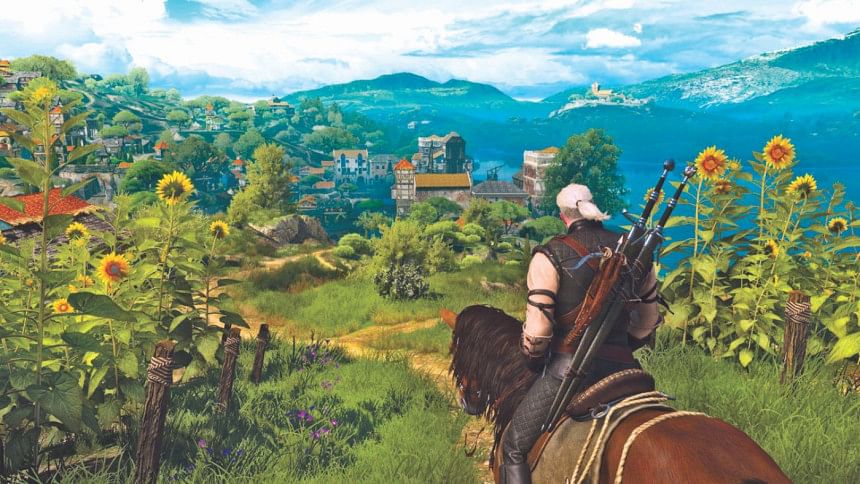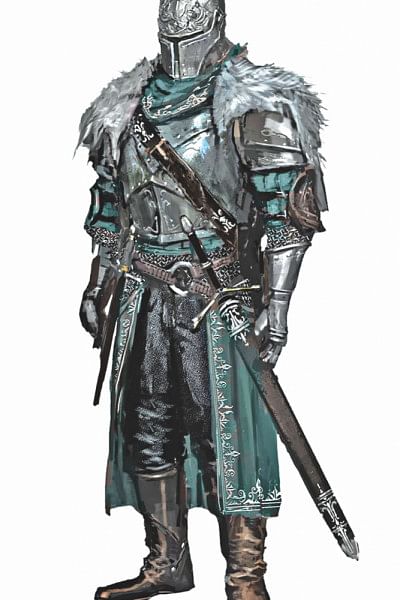Learning worldbuilding from video games

The art of storytelling is not confined to novels. It can be found in a song, it can be there in a poem, and it most certainly can be in a video game. As a matter of fact the word "Can" doesn't do justice to the video games of the present. Storytelling is a vital aspect to modern day gaming. However it's not the storytelling that we're going to talk about, but a certain aspect of if that makes up the backbone of the said story. We're going to talk about the worldbuilding in video games and how it can translate to literature.
Worldbuilding in video games is a subtle process. And yet its effect is almost instantaneous. Worldbuilding in video games go way back in the most inconspicuous titles. Back when we were young and put on that Super Mario Bros cartridge in, we weren't just playing as a 2-dimensional sprite jumping on unsuspecting enemies. We were the plumber in a world where pipes took you to different areas, mushrooms made you bigger and clouds had a little smiley face on them. The worldbuilding in the Mario series was explored to a bigger extent with further titles. The example of Mario might not be the perfect place to start to exemplify worldbuilding in video games, but it shows how effortlessly a world of fiction can be presented and established no matter how silly or absurd that world may sound.
Atmosphere plays a huge role in literature as well as video games. Literature builds up the atmosphere through worldbuilding alone whereas video games have graphical and audio stimuli to go with it. This is an inherent advantage video games have in expressing their fictional world in a more expressive way. However, when a reader enters the fictional world the writer had built, they do not go in blind either. The words string together to evoke the sound and the sight the reader would have experienced in that structured world. And if they don't, then that hinders the worldbuilding to a certain extent. How do the roads smell like in that fictional rain? What are the sights that greet you in a winter morning? One can compare the world in their writing to the world a player would have went through in a video game and look to his handicaps. If the world is explained just as thoroughly as it would have been with visual and audio aid, then that is worldbuilding done right.

There is a very unique aspect to worldbuilding present in games such as The Elder Scrolls series, Mass Effect series and noticeably in the Soulsborne series. That is building upon the lore of the world from the detailed descriptions of the small but impactful things. These do not directly contribute to the story but enhances the sense of reality and depth that the world contains. For a world that is out of the ordinary, this plays a more important role in establishing the rules and the norms of the said world. In the case of titles like Dragon Age, Divinity and Fallout, there exists a codex for this very purpose, filled to the brim with information of the world around. As more of it is explored, conversations are held, books are read, the codex becomes more and more complete, fleshing out the world in the process. These small details play a special role in the case of the Soulsborne series. The world and the story of the Dark Souls trilogy or Bloodborne seem quite vague at first. However through item descriptions, NPC interactions and little details spread out throughout the world the story is put together in a vague but intriguing way.
The worlds of video games are built through little details. It can be a poster on the wall with information that would seem mundane otherwise, the ramblings of a non-playable character about his day-to-day life, the terrain with all its vegetations and inhabitants, the currency that sets the tone for the world, the clothing that tells you more than you need to about how well off their economy is or perhaps about the weather. It's through these little details that the world of a video game is fleshed out. The medium can vary from series to series. Titles like Path of Exile depend on extensive lores through codex description. The Dishonored series on the other hand take a more visual route, showing you the world where whale fat is used as fuel and plague rids the world of misery and mystery.
When it comes to worldbuilding in literature, the significance of all the things stated before stay just the same. The reader won't be in control of the protagonist or the narration. They won't be able to walk around to read that poster on the local inn that tells the tale of the red hooded bandit. They won't be able to walk through the town on their own and see how the lives change with diminishing social status. So it falls to the writer to guide the readers through their world, not only the story, and iron out the little details which would in turn bring believability and credibility to the imagined world. And this is a lesson in worldbuilding that any writer can take from video games and implement in their writing.
Nuren Iftekhar is your local stray cat in disguise; he interacts with people for food and hates bright light. He got Hufflepuff 3 times straight in Pottermore so no walking around that one. Send him obscure memes at [email protected]

 For all latest news, follow The Daily Star's Google News channel.
For all latest news, follow The Daily Star's Google News channel. 



Comments